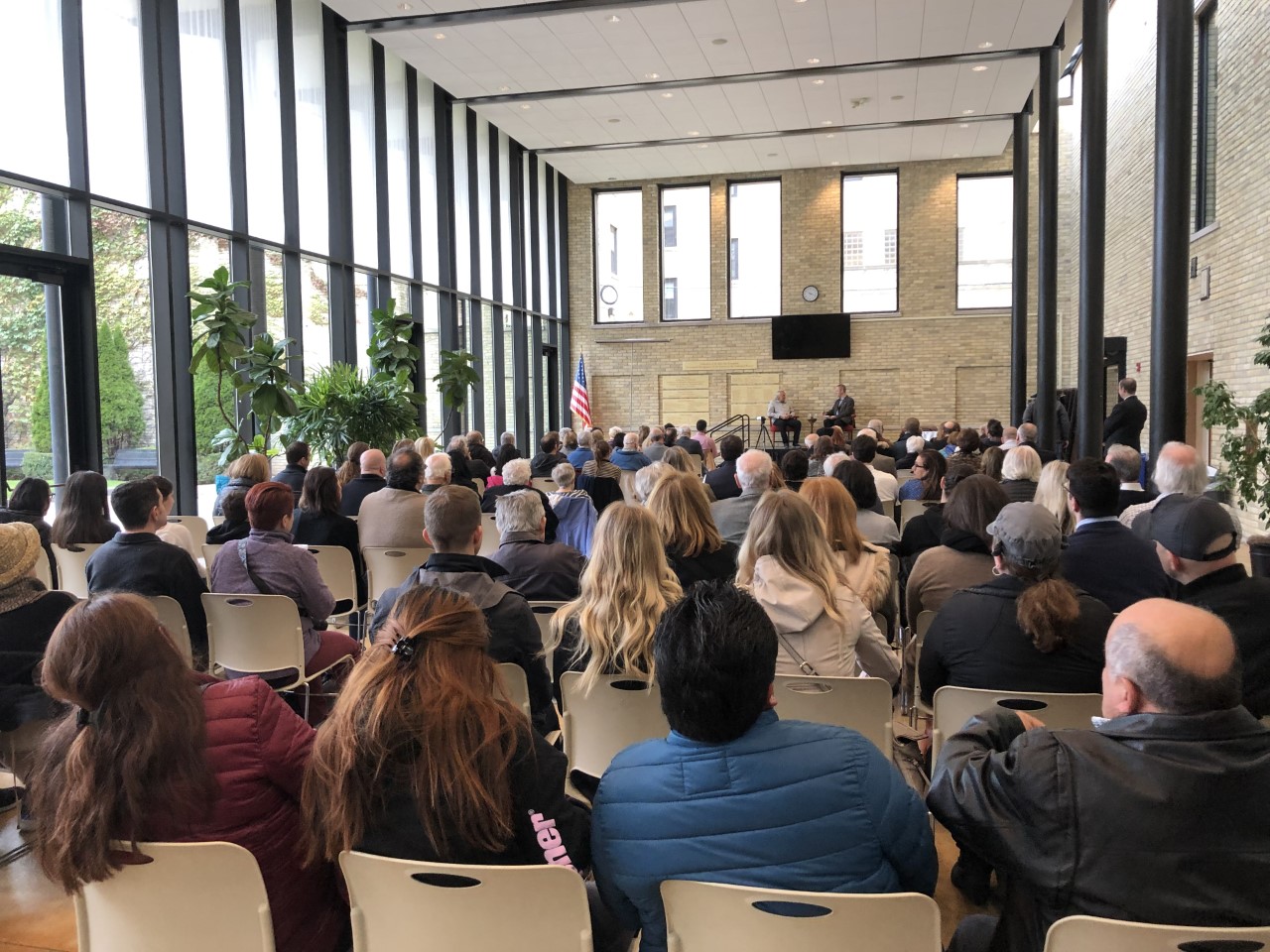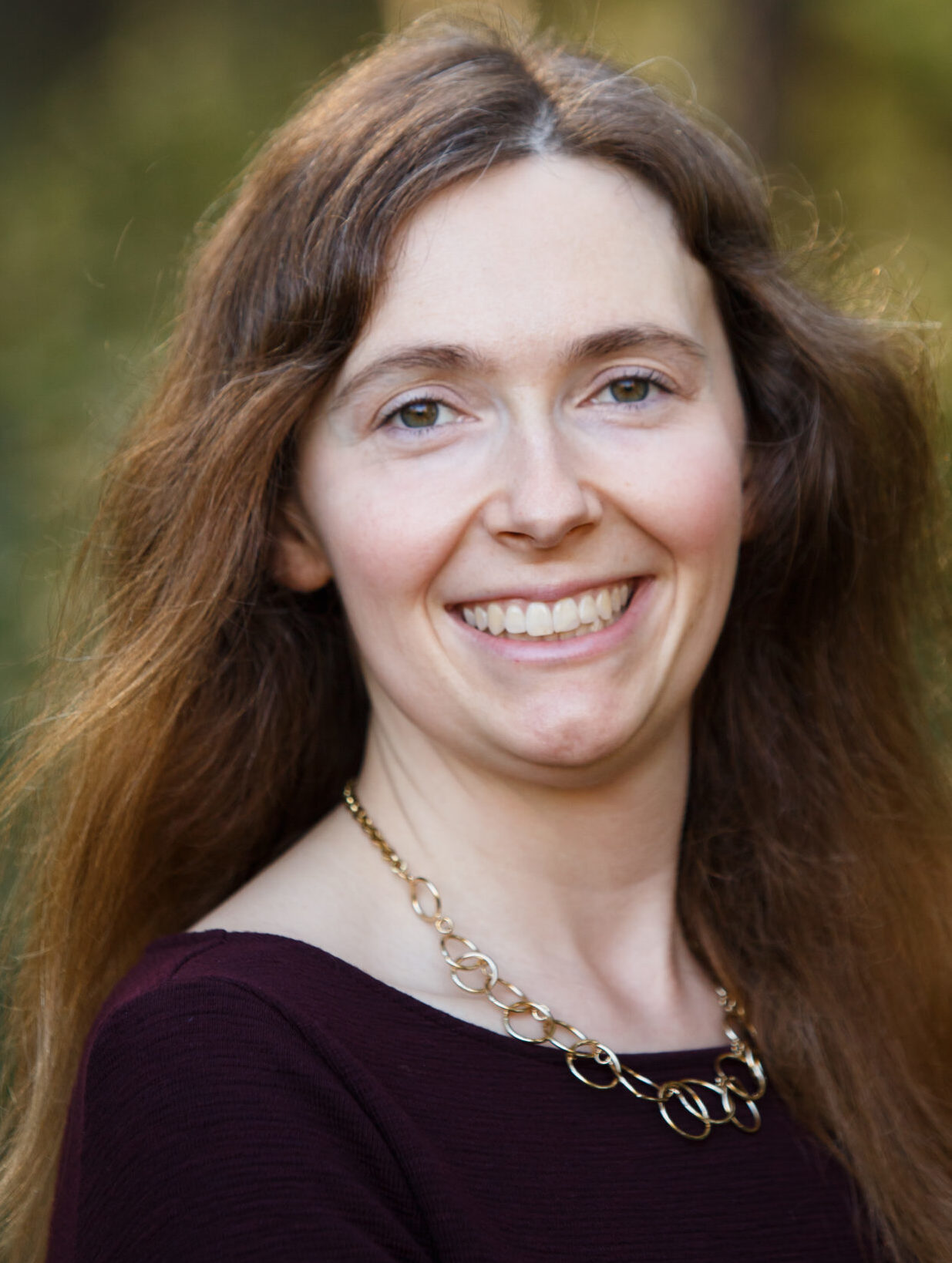
Holocaust survivor Sam Peltz shared his survival story in an event at the Cathedral of St. John the Evangelist, “Holocaust Stories at the Cathedral.” Peltz was born in Poland and survived the Holocaust by hiding with members of his family, Jewish partisans, in the forest. (Submitted photo)
In accepting his Nobel Peace Prize in 1986, writer Elie Wiesel — a Holocaust survivor whose memoir “Night” gave a voice to the more than 6 million Jewish men, women and children murdered in Hitler’s Final Solution — said, “if we forget (the Holocaust), we are guilty. We are accomplices.”
But current data shows much work still needs to be done to promote awareness of the Holocaust and its impact, especially among young people. In 2020, the Conference on Jewish Material Claims Against Germany (also known as the Claims Conference) conducted the “US Millennial Holocaust Knowledge and Awareness Survey,” the first-ever 50-state survey on Holocaust knowledge among Millennials and Gen Z. Though Wisconsin Millennials and Gen Z-ers scored highest nationally on Holocaust awareness, 32 percent could not name a concentration camp or ghetto (that number was 49 percent nationally). Almost half of Wisconsinites surveyed, 47 percent, did not know that 6 million Jews were killed in the Holocaust.
For people like Samantha Abramson, the new executive director of the Nathan and Esther Pelz Holocaust Education Resource Center (HERC), numbers like that are a signal that the work of Holocaust education is more crucial than ever. Furthermore, its success depends on partnerships across ethnic and religious lines — partnerships like the ones HERC has enjoyed with the Milwaukee Catholic community for some time now, said Abramson.

“There’s really such an eagerness to learn and to share resources,” she said. “I think working across religious lines, across identity lines, is how we make the world a better place.”
Some examples of this partnership have included “Holocaust Stories at the Cathedral,” a series of presentations at the Cathedral of St. John the Evangelist in downtown Milwaukee where Holocaust survivors shared their testimony. Last year, HERC also teamed up with Cardinal Stritch University to present “The Last Cyclist,” an absurdist cabaret written by Karel Svenk in the Theresienstadt Ghetto in 1944.
An especially meaningful component of the partnership has been HERC’s outreach to Catholic school students across the Milwaukee area. HERC has facilitated programming at almost all of the archdiocese’s high schools, as well as several middle schools including Notre Dame School of Milwaukee, whose students joined HERC staffers to testify before Wisconsin lawmakers in Madison last year in support of a bill that would require Holocaust education in Wisconsin public middle schools and high schools.
“To hear these young people, young teenagers and even tweens, talking about why they as students value this Holocaust education and why it’s important for their lives — that sort of epiphany moment of, ‘Well, I shouldn’t be a bully in my high school, I want to be an upstander and I don’t want to marginalize anybody’ — it’s so powerful,” said Abramson.
Bruce Varick, associate superintendent of schools for the Archdiocese of Milwaukee, said the formal partnership with HERC began in 2017.
“Through a thorough and comprehensive study of the Holocaust and other genocides of history, we can learn valuable lessons and insights applicable to contemporary times that must be passed on to today’s students, our leaders of tomorrow, so that history does not repeat itself,” said Varick.
Citing the Pontifical Council on Justice and Peace’s Compendium of the Social Doctrine of the Church, Varick added that an understanding of the circumstances surrounding the Holocaust and other genocides speaks to the Catholic social justice principle of solidarity that “highlights in a particular way the intrinsic social nature of the human person, the equality of all in dignity and rights and the common path of individuals and peoples towards an ever more committed unity.”
Dr. Monica Olague-Marchan, inclusivity leader at Catholic Memorial High School, said her students have benefited greatly from the curricular resources made available by HERC at no cost.
“HERC is blessed to have a group of Holocaust survivors and second-generation speakers who make the decision to retell their painful stories of survival, at no charge, so that future generations learn and never forget the pain caused by the dehumanization of others,” said Dr. Olague-Marchan, who said CMH students have also accessed HERC’s Wisconsin Holocaust Survivor Testimony Archive, “Enduring Legacies,” and interviews with Wisconsin Holocaust survivors, “In Their Honor.”
Abramson reported that HERC is currently in the process of creating a new website that will offer even more curricular resources, including a Holocaust Education Map with more than 120 lesson plans for students in middle school and high school, categorized by grade level, time commitment and social studies standards.
What Abramson said she finds most discouraging about the findings of the Claim Conference’s 2020 survey was the fact that one out of three young people in Wisconsin reported seeing a Nazi symbol on a social media platform they visited or used in the past five years.
“Those moments do make us pause and think, ‘Why are we studying the Holocaust?’ It’s because we haven’t learned our lesson yet,” said Abramson. “We can’t say ‘never again.’ We want to, and I hope we can one day — but we can’t yet. Genocides continue to happen today. Hate and anti-Semitism and racism that leads to genocide — those things are all on full display right now, especially here in the United States.”
For more information about HERC, its mission and available resources, visit holocaustcentermilwaukee.org.
